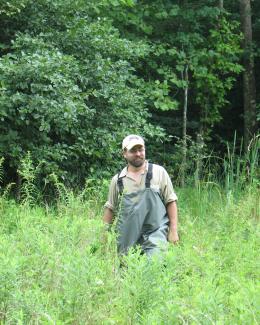Abstract
Peatlands both accumulate carbon and release methane, but their broad range in environmental conditions means that the diversity of microorganisms responsible for carbon cycling is still uncertain. Here, we describe a community analysis of methanogenic archaea responsible for methane production in 17 peatlands from 36 to 53 N latitude across the eastern half of North America, including three metal-contaminated sites. Methanogenic community structure was analysed through Illumina amplicon sequencing of the mcrA gene. Whether metal-contaminated sites were included or not, metal concentrations in peat were a primary driver of methanogenic community composition, particularly nickel, a trace element required in the F430 cofactor in methyl-coenzyme M reductase that is also toxic at high concentrations. Copper was also a strong predictor, likely due to inhibition at toxic levels and/or to cooccurrence with nickel, since copper enzymes are not known to be present in anaerobic archaea. The methanogenic groups Methanocellales and Methanosarcinales were prevalent in peatlands with low nickel concentrations, while Methanomicrobiales and Methanomassiliicoccales were abundant in peatlands with higher nickel concentrations. Results suggest that peat-associated trace metals are predictors of methanogenic communities in peatlands.


